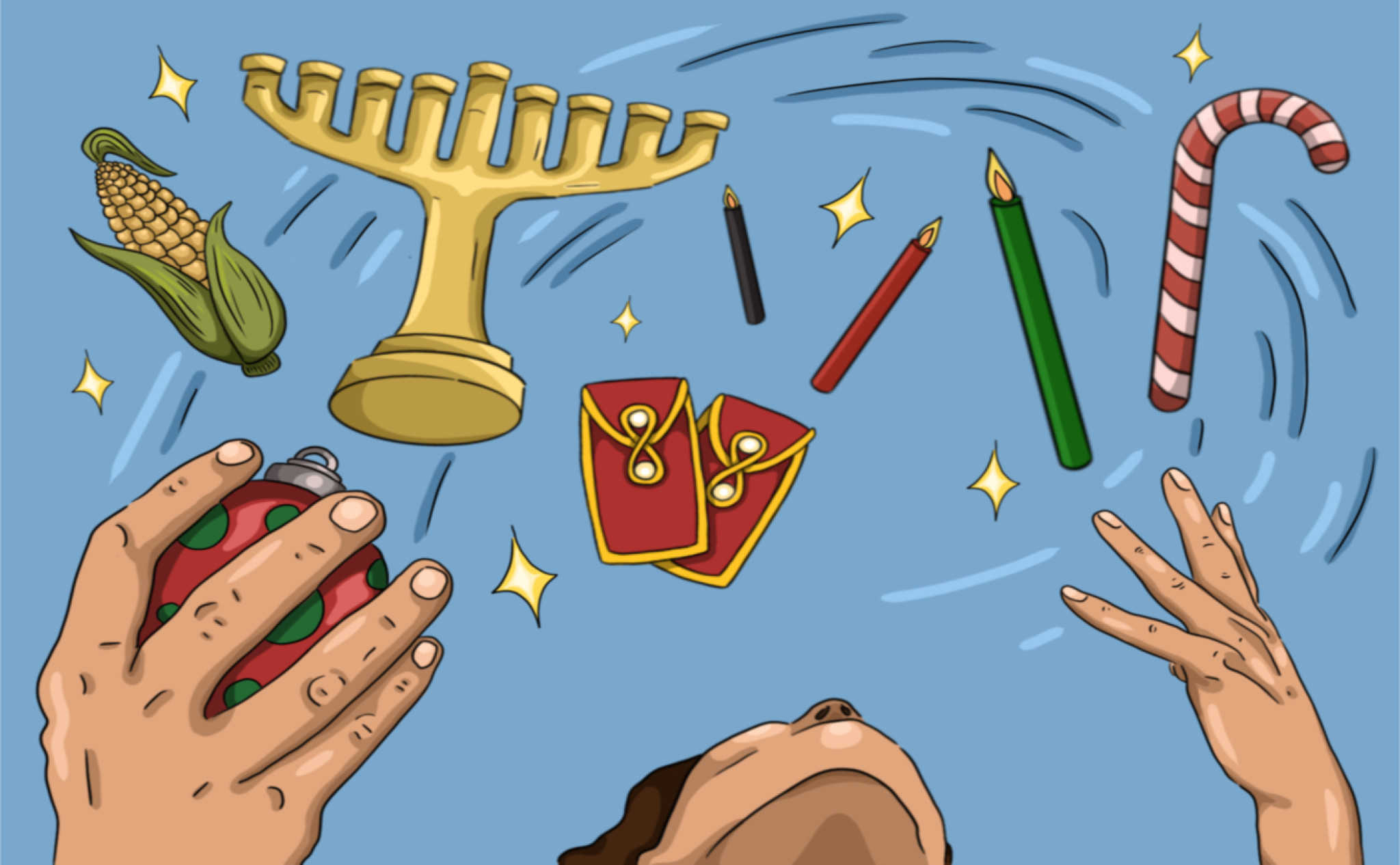The anticipation of the holiday season is a true source of hope and relish for many students, with many beginning to consider the placement of their Christmas trees.
Yet during these times of supposed joy, the thoughts of many multicultural students are far from tranquil. A collection of reflections and hopes lies unspoken.
BHS senior Becca Cardiello sees her origins as the backbone of love and connection in her family. Cardiello was adopted from Tanzania and has a Korean mother and an Italian-American father. “When I’m with my mom’s family we make dumplings, and on my dad’s side of the family we cook pasta,” Cardiello said. “Every Christmas, we do the Feast of the Seven Fishes, which is an Italian celebration,” she continued. “There is something about my Italian family where the love is always always there,” Cardiello said. When it comes down to it, Cardiello sees both her mother and father’s cultural similarities. “You respect your family, you cook ... the language is the same,” she continued.
Sophomore Ori Boozaglo is half American-Ashkenazi Jewish and half Israeli-Sephardic Jewish. The differences she has experienced under the Jewish diaspora shaped her childhood. Boozaglo, whose parents are separated, spent her first few Hanukkahs alternating between both her mother and father’s homes. “I remember walking into my mom’s house and smelling the soups, lighting the candles, and experiencing that warm cozy feeling,” Boozaglo said. “When I went to my dad’s, there was beautiful Israeli music playing and the house was filled with spices and passion,” she continued. Boozaglo’s multicultural background allows her to speak out for different Jewish communities.
Ariana Alharazy, also a sophomore, is half-Ethiopian, half-Yemeni. Her family embraces the fusion of different celebrations.
“We celebrate the traditional Thanksgiving and Christmas, but there’s a twist on it. We have samosas or injera, which are the foods from my cultures,” she said. “For Ethiopians,” Alharazy continued, “Thanksgiving is heavily focused on not just your family but your neighbors, friends, and gathering together.” The mixture of her cultural foods and values in the American context has given Alharazy a sense of balance.
While joy flourishes there are also many hardships that come with being multicultural during the holidays. BHS sophomore Samaliya Manda has an American mother and a Zambian father. While she loves to experience the different ways of life that exist on both sides of her family, she hasn’t found a sense of peace yet. Manda’s family usually celebrates Western holidays but does not partake in many Zambian ones. For Manda, it’s harder to understand her cultural identity when she feels disconnected from both sides of her family. “I’m usually that one cousin that looks different than everyone,” she explained. When she meets her American cousins, her parents impose rules that she follows while “they do a lot of stuff (she) is not allowed to do.” But when traveling to see her Zambian cousins, she feels they live more conservatively and spend more time than she does on chores, babysitting, and making dinner.
“One thing that really sucks is that we don’t really practice any Korean celebrations,” Cardiello added. Growing up in New Jersey, she was a part of an intricate Italian-American family that left little space for exploring her other cultural facets.
“When I go to college, I won’t have the security of saying my dad is white or that my mom is Asian,” Cardiello said. “Most people really don’t care about (my) cultural identity and they see me as only a young Black woman. It’s bittersweet because when I leave the house, my cultures don’t mean anything to others.”
Raised by an Asian mother and white father, it can seem impossible to “fill the spot” of her Tanzanian heritage when others don’t understand the dimensions of her identity.
“Honestly, I don’t get a say, because people know (I’m) not fully Ethiopian or Middle Eastern,” Alharazy said. “During the holidays it can feel like I have to be purely American at school but then at home, I have to embrace my Ethiopian and Middle Eastern cultures.” Alharazy finds this a difficult balance to maintain, with different expectations at different times.
One thing remains clear: as multicultural students grow up, many of them feel a profound desire to connect and learn. “One of my big goals in life is to get closer to the Zambian side of my family,” Manda said. Cardiello feels grateful for the exposure that being multicultural has given her. She’s been able to explore the cultural perspectives that she is a part of.
For many students, what causes the most pain is also what is the most special. According to Cardiello, “All the love and pain of the celebrations comes down to your identity, what you know about yourself.”





